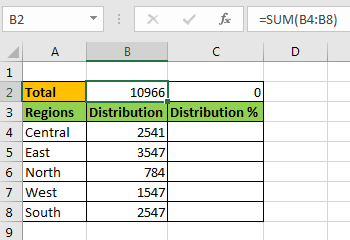


Get ready for some serious Excel-lence as we tackle percentage changes like a boss. By keeping all this in mind while calculating your percentages for a single value, you can ensure accurate results every time. Lastly, keep in mind that percentages are often used in financial computations or data analysis - so precision is critical. Hence always account for such adjustments while doing your calculations. In calculating percentages for a single value, it’s essential to remember that values entered into Excel cells automatically adjust computations due to auto correct feature of excel. Or, subtract one value from another and calculate it as a percentage. Press Enter to calculate the percentage.Īlternatively, you can multiply the percentage value by the original number to determine what amount represents that percentage of the total.Select the division operator ( / ) and enter 100 after it. Then, enter an equal sign followed by the number you want to calculate a percentage for.Select the cell where you want to display your result.To calculate the percentage of a single value in Excel, you can follow a simple process: Example of calculating percentages for a single value

Thanks to her knowledge of basic percentage calculations in Excel, she was able to identify and rectify the error without wasting much time.Įxcel makes calculating percentages so easy, even an accountant could do it without their morning coffee. She quickly found out that someone had entered part values rather than whole values due to human error. The CFO was happily reviewing financial statements when she realized there was an error in the calculations. One useful trick is to hide formulas so they don’t clutter your worksheet but remain functional behind-the-scenes by using codes such as Ctrl + ~ at any point while using Excel when things seem confusing. For instance – “ Percent Change Formula” which can be used for tracking changes over time. It’s worth noting that Excel includes a variety of other formulas for calculating percentages outside the basics.
#Figuring percentages excel how to#
Here is a concise guide on how to use ‘formulas for basic percentage calculation’. When it comes to performing calculations related to percentages in Excel, it’s important to know the appropriate formulas for accurate results. Formulas for basic percentage calculation We’ll introduce you to two essential sub-sections to improve your understanding of basic percentage calculation in Excel. Here’s a “How to Calculate Percentage in Excel: Step-by-Step Guide”. Master basic percentage calculation in Excel with ease! Use formulas for calculation and learn how to calculate percentages for a single value.

To be an effective user of percentage calculation in Excel, it is important to be aware of shortcut keys and functions for quick percentage calculation, as well as common errors and pitfalls to avoid when calculating percentages in Excel.Īre you stuck trying to figure out how to calculate percentages in Excel? Worry no more! This comprehensive guide provides you with step-by-step instructions on how to effectively and accurately calculate percentages in Excel.Creating pie charts and column charts can help visualize percentages, while using conditional formatting can highlight specific values. Generating percentage reports and charts in Excel can be a powerful tool for analyzing and presenting data.Customizing percentage formatting options, such as the number of decimal places, can also make reports and charts more visually appealing and informative. Formatting cells with percentage values in Excel is important for ensuring accuracy and readability.This can be done by subtracting the old value from the new value, dividing by the old value, and then multiplying by 100. Percentage change calculation in Excel can be useful for tracking trends and growth over time.Basic percentage calculation in Excel can be done using simple formulas, such as multiplying a value by a percentage or dividing a value by a total and then multiplying by 100.


 0 kommentar(er)
0 kommentar(er)
